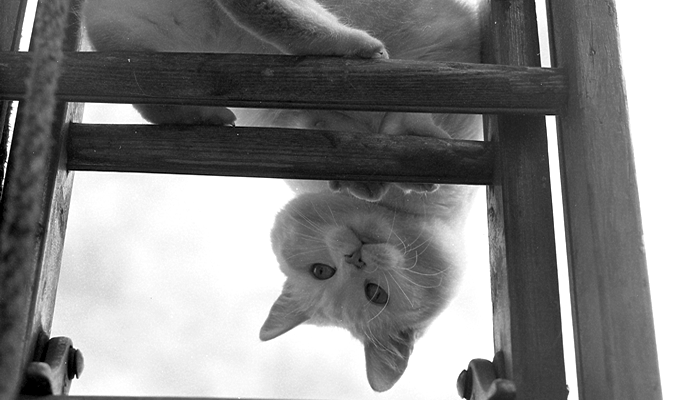Anyone who has truly watched their cat move can relate to this statement. Cats leap, they pounce, they fly through the air and grab curtains like a gymnastic ring. Most cats are very smart and stretch before they begin their gymnastic work out. (The canine athlete is not always this good of a planner before his workout.) In spite of a good warm-up and a good stretch, cats do sometimes get hurt, as can the gymnast. Cats can get muscle strains, cats can tear out toenails, and they can even develop arthritis. Arthritic cats may not jump as much as they used to, or they may have such severe pain that they don’t lift their tail when they walk anymore, and anything in between.
Just as a human gymnast, the feline gymnast will perform her gymnastic event the longest with good physical therapy treatments.
Most of us who have cats will sit with our cat in our lap at some point in the day or in the evening. This is a great opportunity for us to be the physical therapist that our cat needs. For some cats, it’s as simple as gentle massage along the back and over the arms and legs. (Don’t forget the neck.) Other cats who may be more active, or may be older, could use other treatments as well. These treatments can include veterinary spinal manipulation therapy, also called animal chiropractic, laser therapy, or even the newer pulsed electromagnetic field therapy (PEMF). While some cats are not a fan of a lot of handling for chiropractic or acupuncture, many of these cats will sit calmly for laser or PEMF treatment.
The key for these treatments is to start early, before your feline gymnast shows serious signs of injury and/or pain. Ask your holistic or integrative veterinarian more about these treatments.

